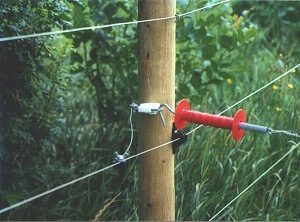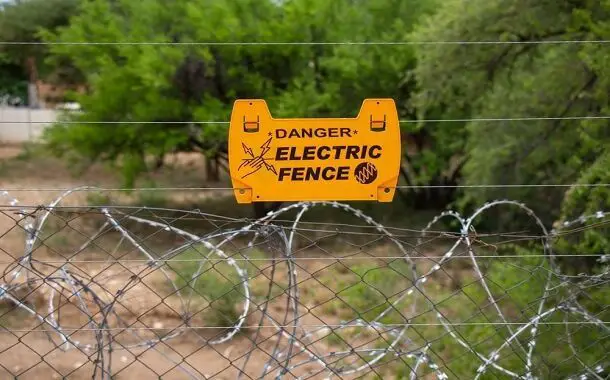Electric Fence Cost
Last Updated on March 14, 2024
Written by CPA Alec Pow | Content Reviewed by ![]() CFA Alexander Popinker
CFA Alexander Popinker
Electric fence systems can be placed on any type of property, whether we are referring to private homes, industrial areas, or agricultural farms. Those used on farms are increasingly appreciated by users, thanks to the advantages they come with.
The purpose of the electric fence on the farm is to delimit a certain area and to keep the animals there within a certain perimeter. At the same time, depending on the model chosen, it keeps the possible predators that constantly cause trouble to farmers at a distance.
How much do the electric fences cost?
The cost of an electric fence is influenced by some factors such as the size of the property, the way it is powered, and the professional you hire to do the installation.
In general, you should plan on spending anywhere between $0.60 and $1.25 per linear foot to professionally install an electric fence. In this estimate, you should get the costs of the charger and other materials like grounding rods, posts, spring wire, and insulators, but also the installation.
As the electric fences can be powered in more ways the cost of their chargers is different. So, for a battery and grid-powered charger, you will have to pay anywhere between $55 and $410, depending on how many acres or miles the charger will power. For example, in order to power 200 miles of wire, you will need a charger on the high end of that price range, while a charger on the low end will be good to power two to three miles of wire.
For a solar charger you will have to pay anywhere between $110 and $510, and sometimes even more than $1,000.
The price of the wire is anywhere between $0.15 and $0.25 per foot.
Every three to four years you will have to replace the batteries of the solar chargers and even more frequently the battery-powered chargers. Expect to pay anywhere between $15 and $110 for a battery, depending on the voltage.
Electric fences overview
An electric fence is a very sophisticated piece of equipment, designed to protect a farm from animals and to give its owners the certainty that wild animals or other pests will not enter the farm. An electric fence will allow the transformation of electricity, whether it is a battery or an accumulator that contains or does not contain a solar panel returning it in the form of electrical impulses that will not fatally injure the animal that touches the fence, but which will leave a lasting impression on it so that it does not get close to that place ever again.
You might also like our articles about the cost of wooden stockade fences, chain link fences, or wooden split rail fences.
Although the electrical impulse provided by the electric fence is between 5000-15000 volts, depending on the electric fence model, it is transmitted at most once per second when the fence is being reached.
It is very important to make the difference between the electric fences and the pet fences, which are also known as invisible fences. Pet fences are buried underground while the electric fences are installed above the ground, often attached to a set of poles or to an existing fence.
Types of electric fences
Electric fences can be of different types such as:
- solar powered;
- battery-powered;
- electric grid powered.
In order to convert the incoming charge into a safer form of electricity, each of these fences is based on a piece of equipment known as a fence charger. Actually, the difference between them is made by the way each charger is powered.
Solar and battery-powered types use the energy from the sun, respectively battery, while a grid-powered electric fence charger is plugged into an outlet and draws power from the grid. Even though the solar chargers use solar energy, they still need batteries but these are charged by the sun as well and rarely need to be replaced.
The majority of the experts recommend buying a grid-powered electric fence if you have access to power because these are less expensive and easier to maintain. In general, battery and solar-powered fences are recommended for the areas where there is no access to an electric grid or the access is not easy.
Electric fence installation
 Check the area where the fence will be installed for any obstacles, cables, and buried utilities.
Check the area where the fence will be installed for any obstacles, cables, and buried utilities.
Stick the poles or logs at a distance of 3 to 5 meters away (closer to each other on rough terrain). Reinforce the corner pillars and the pillars that support traction forces with fixing connections. Then attach the insulators to the poles, gradually unwind the wire and pass the wire through the holes of the insulators. Adjust the height of the row(s) of wire or tape depending on the type and size of the animal to be closed in that perimeter.
For the electric fence installation to work properly, it is not necessary to make a loop and return to the starting point. You can stop the installation at the last insulator at the end of the line. It is forbidden to bury the electric fence wire in the ground at the end of the installation! The animal is the one that will close the circuit when it touches the wire or the band. At that moment, the electricity will pass through the animal’s body and return to the device by grounding.
It is important to check if the city or town you are living in allows the installation of an electric fence as there are cities where this is forbidden or you will need a permit.
Safety measures for the electric fence
The distance between two electric fences powered by two separate devices must not be less than 2 meters so that no human or animal receives more than one pulse per second if it touches them simultaneously.
Make sure that the animal that touches the electric fence can withdraw in all conditions; any prolonged contact with the electric fence can cause serious burns. For example, do not place the electric fence in a swamp where the animal can get stuck and become immobilized.
Do not use the telephone poles to hang the electrical wires.
It is forbidden to supply barbed wire or other similar wires with an electric fence system.


Leave a Reply
Want to join the discussion?Feel free to contribute!